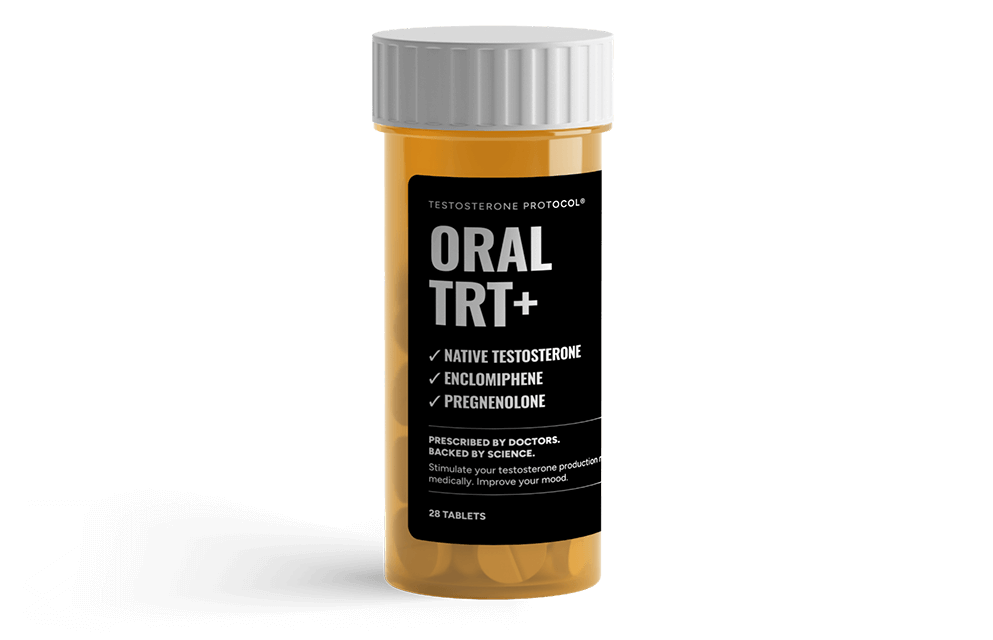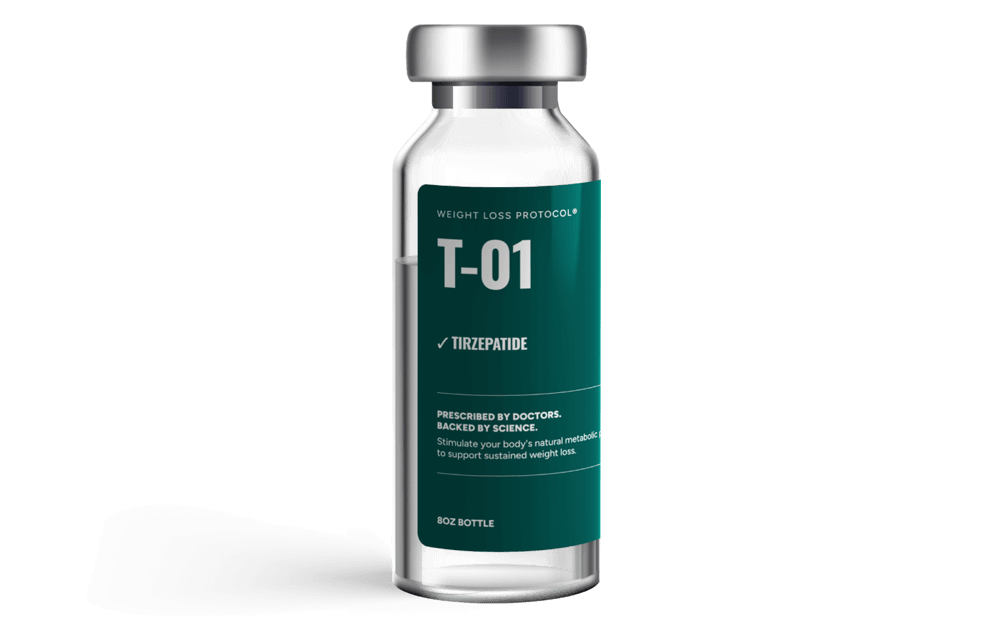Key takeaways:
- GLP-1 agonists slow gastric emptying and make you feel full for longer, delaying cravings for unhealthy snacks and helping people lose weight.
- Research shows that it’s possible to come off these drugs without regaining weight, particularly when accompanied by lifestyle changes like a low carbohydrate diet and exercise.
- It's generally best to work with healthcare professionals or professional coaches who can help you achieve and maintain your weight loss goals sustainably.
If you’re a man who struggles with his weight — or really just anyone on earth at this point — you’ve probably heard of the drugs Ozempic and Wegovy. But what exactly are they? And how do they work?
These popular medications fall under a class of drugs called glucagon-like peptide-1 (GLP-1) receptor agonists. GLP-1 agonists are prescription drugs that make you feel full for longer after meals, curbing your appetite. In essence, you feel full so you eat less, often resulting in substantial weight loss within months.
Keep reading to learn more about GLP-1 agonists, including how they work, some common misconceptions about these medications, and how to maintain weight loss after taking them.
Understanding GLP-1 Agonists
The scientific name for Ozempic and Wegovy is semaglutide. Semaglutide is commonly taken as a weekly injection, but these medications are available as oral tablets as well.
The way that GLP-1 agonists work is relatively simple. In essence, they mimic the actions of a hormone called GLP-1 that’s produced in the gastrointestinal tract. After eating, this hormone stimulates the body to release insulin from the pancreas, which helps lower blood sugar after eating. GLP-1 agonists also reduce the release of glucagon, slow down emptying of the stomach, and increase feelings of fullness. This has a number of important physiological effects, including:
You’ll feel full for longer
GLP-1 agonists slow or delay the emptying of the stomach into the small intestine, reducing appetite and leaving people feeling full for longer. When you have this extended sense of satiety, you tend to have fewer cravings between meals. As you continue to eat smaller portions and have less desire to snack on unhealthy sugary and fatty foods, you will most likely begin to lose weight.
These drugs, when used alongside lifestyle interventions like diet and exercise, are FDA-approved to help people lose weight and keep weight off.
It brings blood sugar levels under control.
For many years before GLP-1 agonists were prescribed for weight loss, they were prescribed to help manage blood sugar levels in people with type 2 diabetes. Type 2 diabetes is a chronic condition wherein the body has trouble properly processing and managing glucose levels.
Many people with type 2 diabetes have trouble bringing their blood sugar levels under control due to insulin resistance and/or impaired insulin production in the pancreas. Insulin is an important hormone that’s produced in the pancreas. The body releases it to keep your blood sugar at a healthy level. Among people with type 2 diabetes, GLP-1 agonists help manage blood sugar in a few different ways:
- Increasing insulin secretion from the pancreas after eating.
- Inhibiting glucagon secretion.
- Slowing stomach emptying, which helps prevent spikes in blood sugar after eating.
Clearing some misconceptions about GLP-1 agonists
GLP-1 agonists are so popular right now that drug companies are struggling to produce enough supply to meet surging demand. However, with increased popularity often comes increased interest, and there is always a risk of misinformation or incomplete information spreading. It is important for men to understand some basic points about GLP-1 agonists, including what they can and can’t do.
Fact 1: GLP-1 agonists were not initially developed for weight loss.
As we noted earlier, GLP-1 agonists were primarily developed to help people with type 2 diabetes better manage their blood sugar levels.
When doctors were prescribing GLP-1 agonists for patients with type 2 diabetes, they realized that many patients who took these drugs eventually lost weight as a side effect.
Given that an estimated 4 in 10 adults in the United States have obesity, doctors reasoned that it would be helpful to prescribe GLP-1 agonists off-label to help individuals who are obese lose weight. So while GLP-1 agonists were not initially developed as an obesity drug, they’re now prescribed to help people lose weight all the time.
Fact 2: GLP-1 agonists alone do not guarantee long-term weight loss
Before taking semaglutide, It’s important to have a clear understanding of how GLP-1 agonists work and how they do not. GLP-1 agonists work via appetite suppression, meaning that you still need to make lifestyle changes (aka eat less) to lose weight. If someone fails to make consistent diet modifcations, like restricting carbohydrates (which we’ll get to below), GLP-1 agonists are unlikely to help them lose weight, keep that weight off, or effectively manage blood sugar levels.
There is compelling evidence to show that patients who have lost weight while taking GLP-1 agonists eventually gain back some, if not all, of the weight they lost once they stop taking this drug. This underscores the need for lifestyle modifications and working with a doctor to find an appropriate maintenance dose that allows you to remain at your target weight.
Fact 3: Taking GLP-1 agonists alone is inadequate for healthy, sustainable weight loss
Because of the skyrocketing demand for GLP-1 agonists, some doctors and unlicensed sellers prescribe these drugs without adequate testing or follow-up. But this generally isn’t the best route to take. It’s important to see a doctor. To ensure that this drug works best, it’s important that it’s prescribed by a doctor who understands your needs and goals, conducts lab tests to make sure you’re eligible, prescribes a customized treatment plan that fits your needs, monitors factors like your blood sugar levels, weight, fat and muscle mass, and day-to-day function, and adjusts your dosage as needed.
GLP-1 agonists work best when coupled with a healthy diet and adequate amounts of exercise. Some people who take GLP-1 agonists lose weight so quickly that they experience side effects like muscle loss or a sunken facial appearance. However, with adequate supervision by a doctor, you should be equipped with information about exercises like resistance training and the kinds of foods to consume — such as a high-protein diet or a ketogenic diet — to manage your weight loss in a way that’s more safe and sustainable.
Also, it’s generally best to work with a professional coach who can help you achieve and maintain your weight loss goals sustainably. At Maximus, our community-based coaching approach includes personalized nutritional guidance and careful monitoring of your calorie and protein intake.
Transitioning from GLP-1 agonists
GLP-1 agonists are powerful tools to help you lose weight and control your blood sugar levels if you have type 2 diabetes.
But what happens when you are on GLP-1 agonists for some time and have seen some results but want to stop taking the drug? One side effect of stopping GLP-1 agonists is that many people regain the weight they lost.
In a study published in Diabetes Therapy, researchers discussed the impact of deprescribing GLP-1 agonists. Deprescribing means discontinuing a medication that was previously prescribed to by a doctor.
The main question that this study sought to answer was whether there was a way for people to safely discontinue taking GLP-1 agonists without causing excessive weight gain or spikes in blood sugar levels, such as by incorporating a lifestyle intervention like a change in diet.
To facilitate the deprescription process, researchers requested that study participants be on carbohydrate restricted nutrition therapy, which means limiting the amounts of carbohydrates in their day-to-day diet. Initially, they were advised to restrict their carbohydrate intake to less than 30 grams per day and to consume about 1.5 grams of protein for every kilogram of body weight. They also received guidance on how much fat to consume to feel full while continuing to lose weight, if that was their goal. Later, these parameters shifted, with carbohydrate restriction and ketone recommendations becoming more individualized. They also took part in regular online follow-ups with a doctor via telemedicine, which allowed participants to gain access to educational resources, biomarker tracking, direct communication with healthcare professionals, and an optional social community, all through a mobile app. They were encouraged to continue this carbohydrate-restricted diet while under the care of the telemedicine clinic.
The researchers found that it’s possible for some people to stop taking GLP-1 therapy without gaining weight when they follow a carbohydrate-restricted diet and have additional support through a telemedicine program. They suggest that one reason why restricting carbohydrates and entering a state of nutritional ketosis may be helpful in keeping weight off after stopping GLP-1 medications is that both the diet and the drug can make you feel less hungry. Additionally, it’s crucial to keep in mind the importance of a holistic approach to weight loss that integrates lifestyle factors like balanced nutrition and physical activity. This not only addresses some potential GLP-1 side effects, but can also maximize the benefits of the medication both during and after treatment.
Interested in learning more about GLP-1 agonists and whether they might be a fit for your weight loss needs? Learn more about Maximus’ Weight Loss Protocol.
Disclaimer: The contents of this article, including, but not limited to, text, graphics, images, and other information, is for information purposes only and does not constitute medical advice. The information contained herein is not a substitute for and should never be relied upon for professional medical advice. The content is not meant to be complete or exhaustive or to be applicable to any specific individual's medical condition. You should consult a licensed healthcare professional before starting any health protocol and seek the advice of your physician or other medical professional if you have questions or concerns about a medical condition. Always talk to your doctor about the risks and benefits of any treatment. Never disregard or delay seeking professional medical advice or treatment because of something you have read on this site. Maximus does not recommend, endorse, or make any representation about the efficacy, appropriateness, or suitability of any specific test, products, procedures, treatments, services, opinions, healthcare providers or other information contained herein. Maximus is not responsible for, nor will they bear any liability for, the content provided herein or any actions or outcomes resulting from or related to its use.












